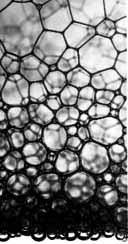Entries categorized as ‘Research’
GM_Scenario
October 18, 2008 · Leave a Comment
par·a·sit·ism + sym·bi·o·sis
Parasitism : an organism living in, with, or on another organism.
Symbiosis : the living together in more or less intimate association or close union of two dissimilar organisms
A. Transformation of urban environments, highly populated city areas with need for alternative housing. As a biological and visual metaphor, this new structures would be intruders (parasites) in terms of space. Looking to “re-discover” suitable spaces to build and fabricate new structures, the system would look at roof tops being not used, abandoned buildings and other similar underused spaces within the city.
B. Transformation of social relations with underused spaces in the public domain outside of existing rules. Transformation of the role of these spaces in respect to the city and relevance in society.
C. Transformation of used plastic (waste,) produced by the population of the city, into building material. This system will recycle plastics for the city by acquiring the material form collection points within the area. Plastic, especially the ones used to make bottles but the main material for construction. The plastic would be shredded by the machine and carried to the fabrication point to be recycled and re-made in to bubbles that will become the basic molecular unit of building.
GM
Vertical climbing system.
http://www.youtube.com/watch?v=U7dS-VSKlxM
Categories: Galo Moncayo · Research
RN_Scenario
October 18, 2008 · Leave a Comment
At the moment I start to think about residential (block system) housing area, Created ca. 1960-1990, mostly common in East-Europe.
Strategy of reassembling- rereading mono-perceptual residential areas
Problem/Task:
The environment is mono-programatic/perceptional/. Based on the modernistic understanding, that everybody should have the same conditions (means repetitive order, strict generic building typology).
These residential blocks have a strong division between an inside (living-) machine and an outside (infrastructure/communication/social interaction) machine.
The needs and wishes of the users never reflect on the environment. There is no interaction between the different in residential blocks packed boxes (living machines).
Since people from East-Europe have the choice where they want to live, there are us well more and more living people who still have no choice (finance, age, work). The social contract is disrupted.
My wish is to open these boxes and start an interaction between the neighborhoods, to reconnect the social environment.
Substances: unused components/modular concrete walls of housing area.
Protocol behavior:
fragmentation of existing blocks. Using the basic modules, from which these blocks were created. Rearranging by gluing or stacking together. Based on users wish. Neighborhood performance.
The growing process happens according to occupant’s reaction.
The residents softly changes they old housing area to the new quality spaces.
Scenario:
An urban “Skype” principle: The states of communication.
“I am at home”, “Pleas talk to me”, “Not visible”.
According to the expression stadium the transformation of the individual boxes happens and connects to the collective environment. The boxes open or closing according to your personal “Skype”-state. The collection of similar “Skype”-states in one area creates related environments. This means a “contact”-state reflects in the collective (arena, theater, park.) mood. A “don’t disturb”-state accords to unmanageable, closed areas.
Categories: Rasa Navasaityte · Research
MJL_First Ideas about the Scenario and the Substance
October 17, 2008 · Leave a Comment
Categories: Martina Johanna Lesjak · Research
MB_Scenario
October 17, 2008 · Leave a Comment
Creating atmospheres by processing the material.
Atmosphere in the sense of the impression of space.
Ways of affecting the atmospheres differs depending on the sense we´re focusing on. For start I´ve decided to focus on the sense of vision: affecting the atmospheres by introducing and controlling a set of parameters affecting the visual perception of space: thickness of the material (in order to achieve desired amount of opacity), porosity (manipulating the amount of light), complexity of the pattern , colour, width and height of the space, and ways of connecting the spaces (for example: ramps or stairs).
(Since the character of the atmosphere is highly influenced by the scale of the space, different parameters should be used for different scales.)
Examples: intimate, seductive atmosphere – semi-transparent material (thinner layers), subtle pattern, darker colours, no sudden changes in the space flow, spaces are connected with ramps of gentle slope
psychotic atmosphere – perception of narrowing or widening the space , the pattern is more intense, the amount of light varies from extremely high to extremely low, steeper connections between spaces
…
Variation of transitions between atmospheres (depending on the atmosphere and the desired effect):
- subtle transitions
- abrupt transitions
- overlapping the atmospheres
MATERIAL AND ITS PROPERTIES: – synthetic resin
- fit for moulding
- different degrees of opacity
- possibility of adding colour
ROBOTIC BEHAVIOR (methods of processing the material):
- controlling the porosity by creating systematically dispersed light openings (perforating the material by stabbing, scratching, passing through a surface…)
- imprinting the pattern into the material (by rolling over the material, suction…)
- controlling the opacity by controlling the thickness (the amount of layers of the material)
- the robot changes the nature of its movements according to the atmosphere it´s creating (more subtle and continuous movements for the intimate atmosphere, aggressive discontinuous movements for the psychotic
atmosphere, etc.)
Categories: Mirta Bilos · Research





























